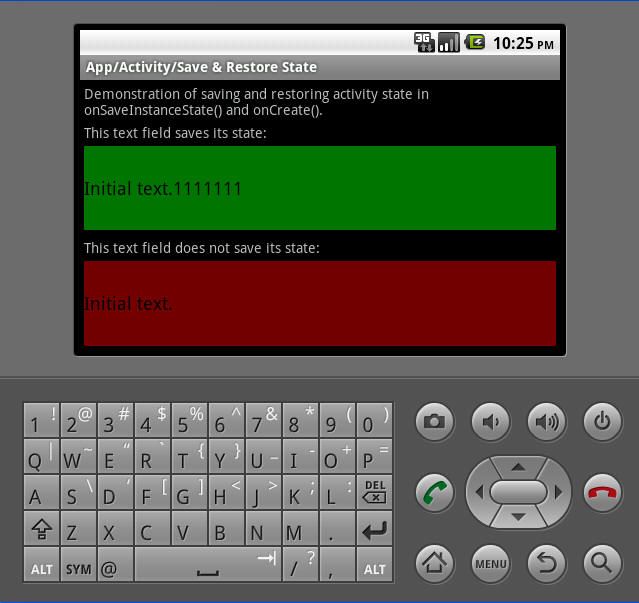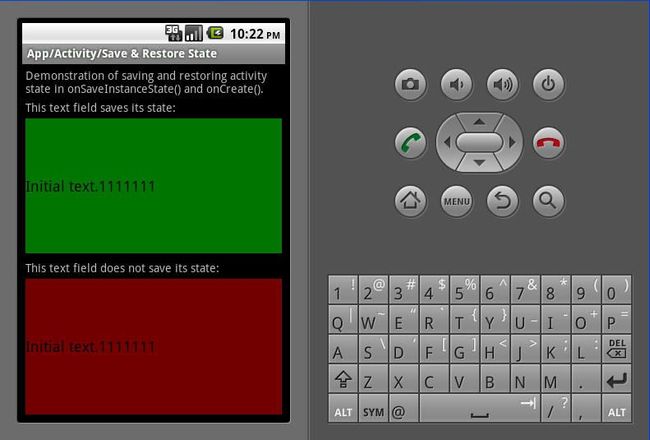API Demos 2.2 研读笔记(10)——Redirection, Reorder Activity and Save&Restore State
Redirection
在android中没有像JEE中专门的机制来管理forward和redirect,在这个示例中是通过简单的判断来实现重定向的效果。
主要相关代码:
protected void onCreate(Bundle savedInstanceState) {
super.onCreate(savedInstanceState);
setContentView(R.layout.redirect_main);
// Watch for button clicks.
Button clearButton = (Button)findViewById(R.id.clear);
clearButton.setOnClickListener(mClearListener);
Button newButton = (Button)findViewById(R.id.newView);
newButton.setOnClickListener(mNewListener);
// Retrieve the current text preference. If there is no text
// preference set, we need to get it from the user by invoking the
// activity that retrieves it. To do this cleanly, we will
// temporarily hide our own activity so it is not displayed until the
// result is returned.
if (!loadPrefs()) {
Intent intent = new Intent(this, RedirectGetter.class);
startActivityForResult(intent, INIT_TEXT_REQUEST);
}
}
注:如果loadPrefs()返回值为null,那么系统直接跳转到RedirectGetter Activity。
Reorder Activity
如果我们想要已经运行的Activity重新显示在屏幕上,而不要重新create,我们可以在Intent中添加flag,其值为Intent.FLAG_ACTIVITY_REORDER_TO_FRONT。
Reorder Activity这个示例就是利用这个技巧达到对栈中的Activity进行重新排序的效果。
主要相关代码:
Intent intent = new Intent(ReorderFour.this, ReorderTwo.class);
intent.addFlags(Intent.FLAG_ACTIVITY_REORDER_TO_FRONT);
startActivity(intent);
注:如果在Intent中添加了Intent.FLAG_ACTIVITY_REORDER_TO_FRONT并且接收Intent的Activity处于running状态,那么接收Intent的Activity就会被置于栈顶。如果同时指定了FLAG_ACTIVITY_CLEAR_TOP,那么FLAG_ACTIVITY_REORDER_TO_FRONT就会被忽略。
Save&Restore State
某些时候Activity在我们不知情的情况下关闭了,例如内存资源不足或者旋转屏幕,但是我们希望Activity上的信息不丢失,当我们稍后再重新启动这个Activity时关闭前的状态仍在。这就需要用到Activity state的保存和恢复机制。
在一个Activity被销毁之前,onSaveInstanceState(Bundle outState)会被调用,目的是保存Activity的state。
在一个Activity被重新创建时,如果ActivityThread中的savedInstanceState不为空,那么onRestoreInstanceState(Bundle savedInstanceState)会被调用,销毁前的状态会被恢复。
系统在设计上就尽量做到尽可能少的去调用onSaveInstanceState和onRestoreInstanceState方法。一般的Activity跳转时不需要保存和恢复状态,所以这种情况下一般不会调用(除非Activity因内存不足而被杀死)。
在layout中的只要是指定了id的view,它们的状态都会被保存和恢复。
在API Demo示例中,设置文本框的属性android:freezesText="true",同时在Activity中添加java代码:
/**
* Retrieve the text that is currently in the "saved" editor.
*/
CharSequence getSavedText() {
return ((EditText)findViewById(R.id.saved)).getText();
}
/**
* Change the text that is currently in the "saved" editor.
*/
void setSavedText(CharSequence text) {
((EditText)findViewById(R.id.saved)).setText(text);
}
不是指定id就可以了吗?加这些有什么目的?我不甚明白。待日后研究吧。
我们通过旋转屏幕来看这个示例的效果:
1. 旋转屏幕前在两个文本框中分别输入内容。
2. 旋转屏幕后第一个文本框中新输入的内容还在,第二个则消失了。

注:旋转屏幕的时候当前的Activity被销毁病重建了。其间调用了onSaveInstanceState和onRestoreInstanceState方法。
我用debug模式跟踪查看了旋转屏幕时Activity lifecycle的具体流程:
onSaveInstanceState-->onPause-->onStop-->onDestroy-->onCreate-->onStart-->onRestoreInstanceState-->onResume
